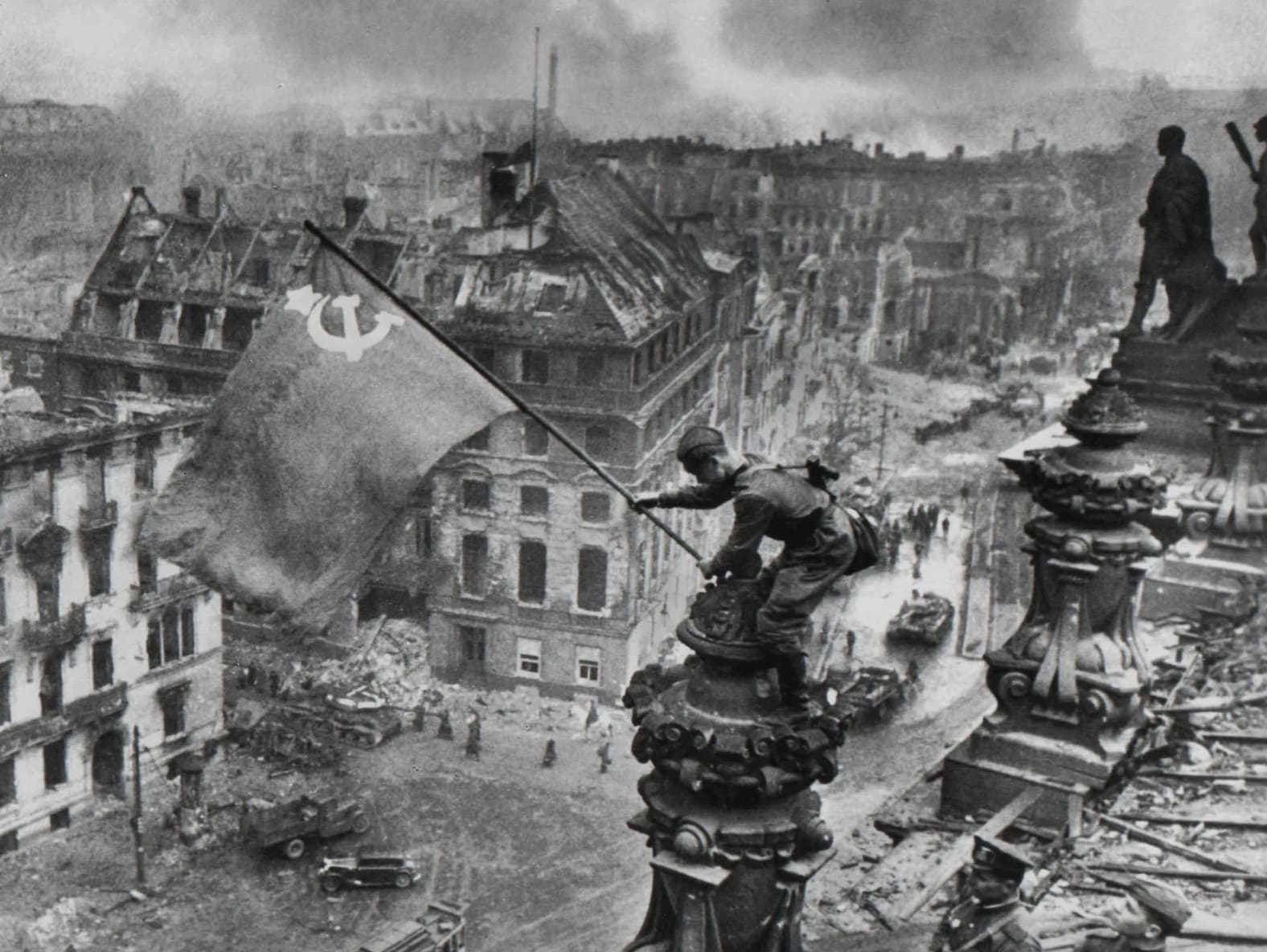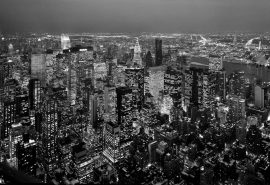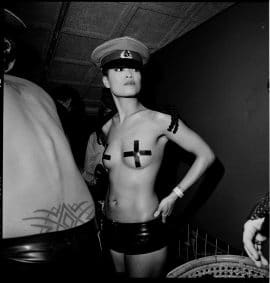Artist: Yevgeny Chaldei (1917-1997)
Gelatin silver print, later printed by the photographer, verso signed, print size 22×28,5cm, on paper size 22,5x29cm.
Placing the Soviet flag on the Reichstag, Berlin, May 2, 1945. The flag was originally placed on the evening of April 30, it was dark and there was no photographer present. The Germans replaced the flag with the Nazi flag on May 1. On May 2, the Soviet flag was raised again, and now it could be captured.
This photo is special for two reasons. The soldier who is helping the man with the flag is wering two wristwatches; photographer Chaldej erased one of the watches from the negative. (Soldiers are suspected of plunder and that watch would be proof of that). And he prints the photo with the help of another negative with dramatic clouds of black smoke in the background.
Provenance: privat collection Sake Elzinga, purchased in 1995 directly from the photographer in question in Moscow.
Yevgeny Chaldei (1917-1997) was of Ukrainian Jewish descent, born in Yusovka (now Donetsk) and became a renowned photographer in the Soviet Union.
When he was only one year old, his mother and grandfather were murdered during a pogrom. From childhood he was obsessed with photography. At the age of fifteen, he made his own camera from a cardboard box using his grandmother’s glasses as lenses. Fascinated by the medium, he developed the negatives under his bed by the light of a candle.
In 1939 he joined the Soviet Russian press agency Tass. He made historical images of important passages during WWII. In 1941 he captured Murmansk, which was destroyed by the German armies in 1941 after dropping 300,000 incendiary bombs. At the end of April 1945 he entered Berlin with the Red Army. May 2 marks the placing of the flag on Reichstag. Later that year he made recordings of the war winners during the Potsdam Conference in Berlin. And in the same year, Chaldei also depicted the Nuremberg Trials.
In 1949 he had to resign from Tass due to the rising anti-demitism in the Soviet state. Under Khrushchev, he started working for Pravda, the communist party newspaper, and for an art magazine from 1959 onwards, but was banned from photographing Jewish artists. He took photos of famous Russian composers such as Rachmaninov, Shostakovich and Khachatuyan. The collaboration with Pravda lasted until 1972. He only became widely known as a photographer after the end of the USSR in 1991.







There are no reviews yet.